拨开2400年迷雾 走进曾侯时代
2019-04-22
3月28日,一场名为《江汉汤汤 南国之纪——曾侯与他的时代》的展览,在重庆中国三峡博物馆拉开大幕。许多难得一见的重磅国宝,首次来重庆做客。
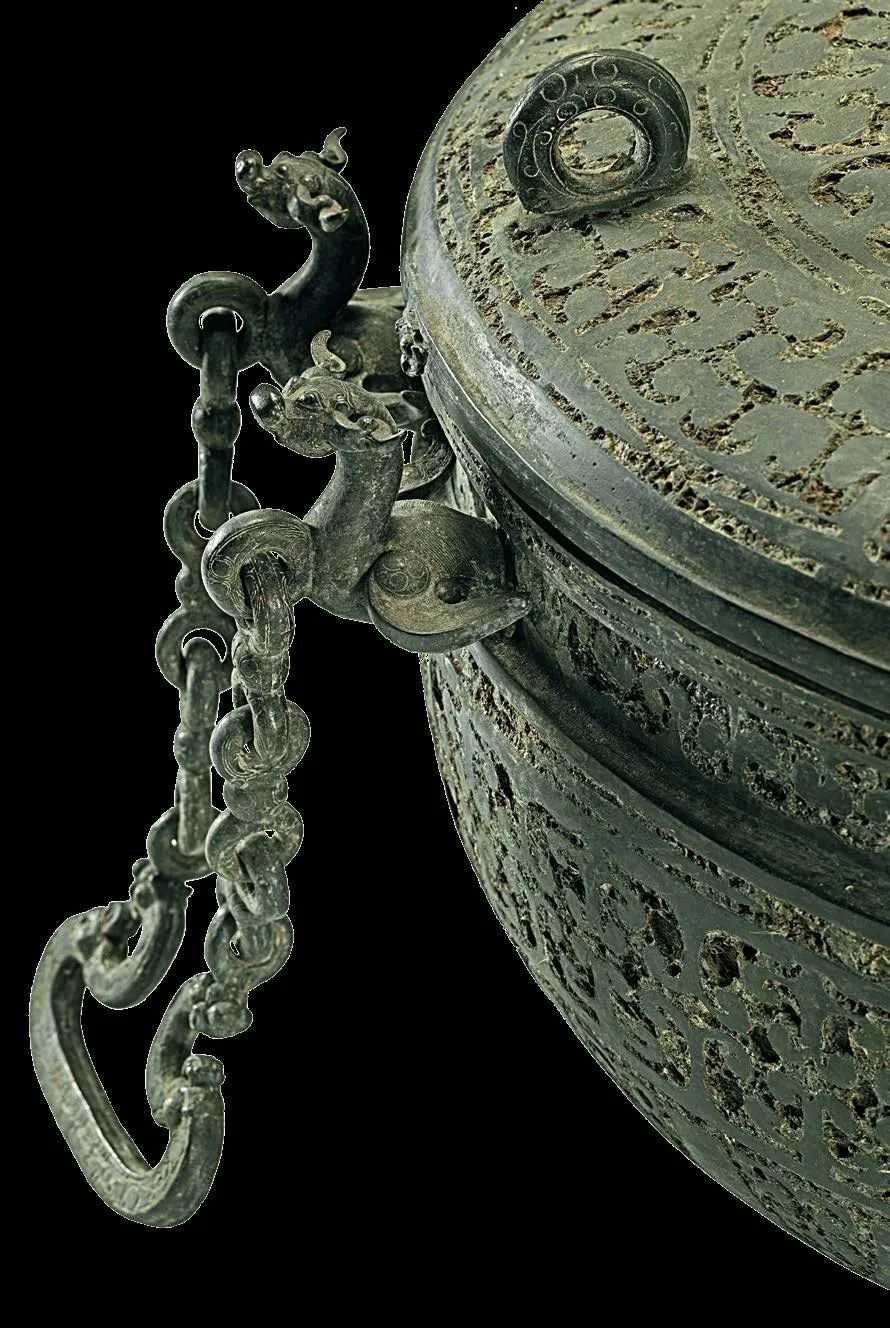
展品以郭家庙、苏家垄、熊家老湾、曾侯乙等曾国墓地出土的青铜礼器、乐器为主,包括目前所知年代最早、数量最多的编钮钟,吴王夫差矛等重量级文物。在展出的105件(套)文物中,一级文物多达68件(套)。展览配合湖北地区出土的商周青铜器,带领观众一起走进曾侯的那个时代。
展览将持续至6月2日。
On March 28, an exhibition entitled Jiang River and Han River Run Vast and Mighty, Disciplining Rivers of Southern Regions - Marquis Yi of Zeng and His Times was launched in in Chongqing China Three Gorges Museum. Many rare and major national treasures have come to Chongqing for the first time.
The exhibits are mainly bronze ritual wares and musical instruments unearthed from the tombs of Zeng State such as Guojiamiao, Sujialong, Xiongjialaowan and Marquis Yi of Zeng, including the earliest and largest number of Niubianzhong (bronze knot bells) known so far and the heavyweight cultural relics such as the Spear of King Fu Chai of Wu. Of the 105 pieces (sets) of cultural relics on display,the first grade cultural relics amount to as many as 68 pieces(sets). The exhibition, complemented with the bronze wares of Shang and Zhou dynasties unearthed in Hubei, will offer the audience a glimpse of the era of Marquis Yi of Zeng.
The exhibition will continue until June 2.
曾国的秘密
Secrets of Zeng State
在这个展览中,不少展品刻有“曾侯乙作持用终”字样,这些器物都来自曾侯乙墓。
1978 年,湖北随州市郊的擂鼓墩发掘出一座2400年前的战国墓葬,出土文物多达15000余件,包括青铜礼器、乐器、竹简、玉器、兵器、车马器、漆木器、丝织品等,数量多,规格高,尤其以配套完整的编钟、编磬等乐器为世所罕见。这就是震惊世界的曾侯乙墓。
曾侯乙墓的很多出土文物显示了墓主身份的显贵,及当时文化艺术科学技术上的高度发达。
例如墓内出土的车马兵器种类之全、数量之众、综合功能之强,前所未见,其中射远兵器居多,长杆兵器尤为特殊,说明曾侯乙是一位擅长车战的军事家和指挥官;青铜乐器的铭文涉及大量乐理乐律铭文,显示了曾侯乙生前对于乐器制造与音律研究的重视程度;墓内大量青铜器珍品及绘画、雕塑艺术、书法精品并非冥器,而是曾侯乙生前所用之物且为他亲自督造,说明他兴趣广泛,具有多方面的才华和较高的艺术鉴赏力。
然而,随着曾侯乙墓的发掘,大量的谜团也不断显现。为何有着辉煌礼乐文明的曾国,史书上却不见记载?随州本是随国之地,为何频频出土的却是曾国文物?曾、随到底是何关系?曾国立国于何时?曾国的族姓是什么?除了曾侯乙外,曾国还有哪些国君?曾国最后怎么样了?
随着研究的不断深入,和随州曾侯墓的不断发现,历史研究人员抽丝剥茧,慢慢揭开了曾侯乙墓葬背后的神秘面纱……
In this exhibition, many of the exhibits are inscribed with the characters like "Manufactured and Enjoyed by Marquis Yi of Zeng for ever", and all these artifacts are from the tomb of Marquis Yi of Zeng.
In 1978 at Leigudun, a suburb of Suizhou, Hubei,a 2400-year-old tomb of the Warring States Period and more than 15,000 pieces of cultural relics were unearthed,including bronze ritual wares, musical instruments, bamboo slips, jade wares, weapons, chariots and harnesses, lacquer wares, silk fabrics, etc. They are numerous and of high ranks, especially those musical instruments with complete sets of Bianzhong (bells) and Bianqing (chimes), which are rare in the world. This is the tomb of Marquis Yi of Zeng,which shocked the whole world.
Many cultural relics unearthed from the tomb of Marquis Yi of Zeng indicated the dignitary status of the tomb owner's identity and the high level of cultural, artistic,scientific and technological development at that time.
For example, the chariots and harnesses and weapons unearthed in the tomb have such a complete range, such a large number and such strong comprehensive functions that have never been seen before. Most of them are long-range weapons, especially the long-pole weapons, which shows that Marquis Yi of Zeng was a strategist and commander who was good at chariot battle. The inscriptions on bronze musical instruments largely involve musical principles and rhythms, which shows the importance Marquis Yi of Zeng attached to the manufacture of musical instruments and the study of musical rhythms during his lifetime. A large number of bronze ware treasures and fine works of painting,sculpture and calligraphy in the tomb are not funeral objects,but objects used by Marquis Yi of Zeng and specifically manufactured under his supervision, which shows that he had a wide range of interests, both versatile and of high artistic appreciation.
However, with the excavation of the tomb of Marquis Yi of Zeng, a large number of mysteries have emerged. Why had Zeng State, which had such a splendid ritual and music civilization, not been recorded in any history books? Suizhou had been originally part of Sui State, why were the cultural relics of Zeng State unearthed frequently? What was the relationship between Zeng State and Sui State? When was Zeng State founded? What was the family name of Zeng State? Apart from Marquis Yi of Zeng, who other monarchs of Zeng State are there? What happed to Zeng State in the end?
With the deepening of research and the subsequent findings in the tomb of Marquis Zeng in Suizhou, historical researchers have slowly unveiled the mystery behind the burial of Marquis Yi of Zeng.
2013年,在文峰塔东周曾侯墓发掘中,考古人员发现编钟上有段铭文:“白适上通,左右文、武,达殷之命,抚定天下,王遣命南公,縈宅土……”意思是说,南宫适得到周王重用,辅佐周文王、武王,灭殷平定天下,周王即分封南宫适,到南方营建城址。考古人员认为,铭文出自曾侯墓,周王显然分封的是曾国,受封地在今随州地域,也就是史书记载的随国。
而在叶家山西周曾侯犺墓的一件簋上,则有“犺乍剌考南公宝尊彝”,曾侯犺称“南公”为“考”,“考”为对逝去父辈的称谓。由此可知,曾侯犺为被封于曾国的南宫适的后代。
通过这些曾国青铜器铭文的研读,专家们认为南宫适受周成王的分封,为曾国的始封国君,从现有的发现来看,基本确定曾国和随国实为一国二名。而曾侯乙大约生于公元前475年,卒于公元前约433年,是战国时期南方姬姓曾国(即姬姓随国)的国君。
In 2013, during the excavation of Marquis Zeng's tomb of Eastern Zhou Dynasty at Wenfengta, archaeologists found an inscription on a Bianzhong (bronze bell), which goes to the effect that Nangong Shi was put in important positions by the King of Zhou,assisted King Wen of Zhou and King Wu of Zhou, wiped out Yin Dynasty and put down rebellions, and later in enfeoffment the King of Zhou granted Nangong Shi to construct a city in the southern region.Archaeologists believe that the inscription came from the tomb of Marquis Zeng, and obviously, it was Zeng State that King of Zhou granted, and the fief was located in today's Suizhou area, which was the Sui State recorded in history books.
However, on a Gui (an ancient vessel) in the tomb of Marquis Kang of Zeng of the Western Zhou Dynasty at Yejiashan,there are inscriptions saying to the effect that "Marquis Kang of Zeng manufactured the precious vessel devoted to his late glorious father Nangong Shi", where Marquis Kang of Zeng called "Nangong Shi" "Kao" (late father), and "Kao" used to be the appellation for one's late father. It indicates that Marquis Kang of Zeng was the descendant of Nangong Shi of Zeng State, who had been granted Zeng State in enfeoffment.
Through the study of the inscriptions on the bronze wares of Zeng State, experts believe that the Nangong Shi was granted by King Cheng of Zhou Dynasty as the first monarch of Zeng State in enfeoffment. According to the existing findings, Zeng State and Sui State are basically confirmed as one country with two names.Whereas Marquis Yi of Zeng was born in about 475 BC and died in about 433 BC, who was the monarch of Zeng State with family name of Ji in the south in the Warring States Period.
曾侯展重磅上线
Blockbuster Exhibition of Marquis Zeng Is Launched
[编钮钟]
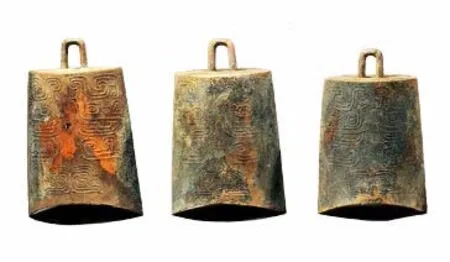
·编钮钟
出土于枣阳郭家庙曾国墓地。十件一组的钮钟,型式统一、大小相次、音高稳定、宫调明确,是一套完整实用的青铜乐器,为目前所知年代最早数量最多的音乐性能成熟的编钮钟。完整呈现了“徵、羽、宫、商、角”即“五正声”的宫调系统新格局,他为曾侯乙编钟的先声,体现了曾国音乐的发达。
Bianniuzhong (Knot bells).Unearthed in the tomb of Zeng State in Guojiamiao, Zaoyang.The knot bells with ten pieces as a set is a complete set of practical bronze musical instruments with uniform style, proper sequence of sizes, stable pitch and welldefined modes of Chinese music.So far, it is the earliest and largest number of known Niubianzhong(knot bells) with mature music performance, which completely presents the new pattern of Chinese music modes of "Zhi, Yu,Gong, Shang and Jiao" or the "Five Orthodox Sounds". It heralded the Bianzhong (bells) for Marquis Yi of Zeng, reflected the development of music in Zeng State.
[楚王孙渔戟]
错金鸟篆铭文“楚王孙渔之用”六字,三字在胡部,三字在援部。文字工整秀挺,具有很高的艺术研究价值。本件与现藏于中国国家博物馆的一件为一组双戈戟。
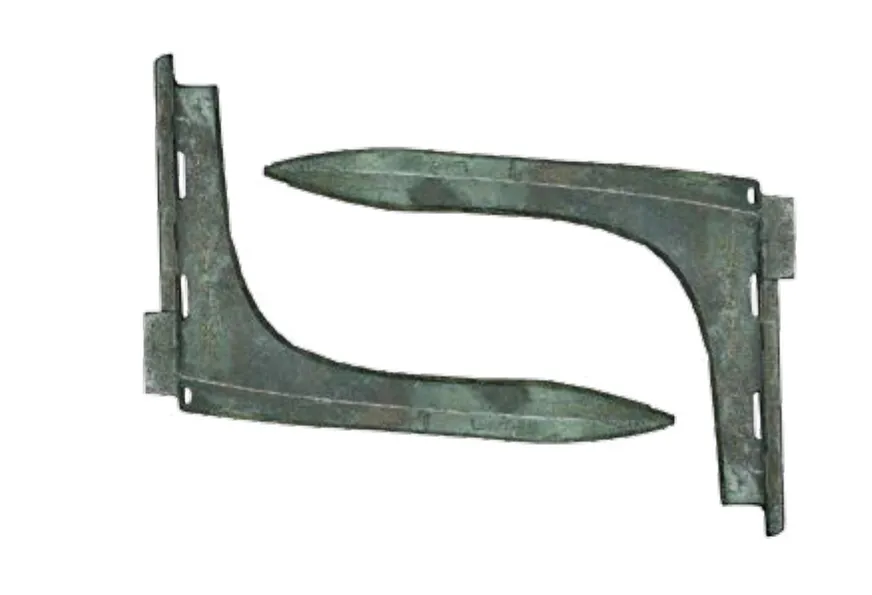
·楚王孙渔戟
Halberd of King Sun Yu of Chu.The Bird Script with inlaying goes"For Use of King Sun Yu of Chu",where three characters was inscribed at the Hu (vertical part with one blade) and three characters at Yuan(sharp and long part with double blades). The inscriptions are neat and elegant, and have a high value of artistic research. This piece and the one now collected in the National Museum of China are a set of double halberds.
[吴王夫差矛】

·吴王夫差矛
两行错金铭文:“吴王夫差自作甬(用)(鋘 )。”
The Spear of King Fu Chai of Wu. Two lines of inscriptions with inlaying gold: "Manufactured and used by King Fu Chai of Wu”
[升鼎]

·升鼎
精美异常。鼎的内壁还有铭文“曾侯乙作持用终”,表示曾侯乙对该鼎的专有属性。曾侯乙墓内出土了九鼎八簋,足显其尊贵的身份。
Sheng-ding(ancient cooking vessel).Extremely exquisite and attractive.The inner wall of the Sheng-ding also bears the inscription "Manufactured and enjoyed by Marquis Yi of Zeng for ever",which indicates that it had been used exclusively by Marquis Yi of Zeng. The nine Ding(ancient cooking vessels)and eight Gui were unearthed in the tomb of Marquis Yi of Zeng, which fully testifies his dignitary status.
[炉盘]
出土时炉内存有木炭,盘内存有鲫鱼鱼骨,盘底有烟炱痕迹,是目前发现最早的煎烤食物的青铜炊具。

·炉盘
Stove Plate. When unearthed,there was charcoal in the stove,fish bones of crucian carp in the plate, and traces of soot on the bottom of the plate. It was the earliest bronze cooker found for frying and roasting food.
[建鼓座]

·建鼓座
重达192公斤。铸造工艺十分繁复,采用了分铸、铸接和焊接相结合的方法,由8对大龙和数十条纠结穿绕的小龙构成,龙身镶嵌绿松石,是迄今所见最精美的一件先秦建鼓座,也是已发现最早的建鼓座实物。
Jian-drum Stand. It weighs 192 kilograms. The casting process was very complicated,which adopted the combined methods of casting separately,casting and welding. It is composed of eight pairs of large dragons and dozens of intertwined small dragons.The dragon bodies were inlaid with turquoise. It is the most exquisite piece of pre-Qin Jiandrum Stand ever seen, and it is also the earliest material object of its kind.
[曾伯文簋]
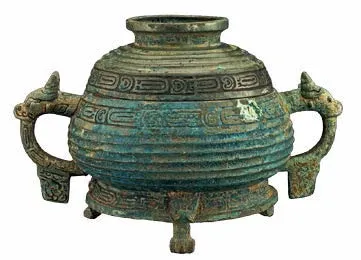
·曾伯文簋
盖、腹内均铸铭文:“唯曾伯文自作宝簋,用锡眉寿黄耇,其万年子子孙孙永宝用享。”
Gui of Zeng Bowen.Inscriptions were cast on the lid and inner wall: "Manufactured and used exclusively by Zeng Bowen, to enjoy a long and healthy life. His later generations in ten thousand years will enjoy it for ever."
[兽面纹鼓]

·兽面纹鼓
商代晚期 。此类仿木腔皮鼓,目前存世仅两件,另一件藏于日本泉屋博物馆。
Beast-faced Drum. Late Shang Dynasty. There are only two such wooden-cavity leather drums in existence, and the other is collected in Japan's Sen-Oku Hakukokan Museum.
[提梁圆鉴]
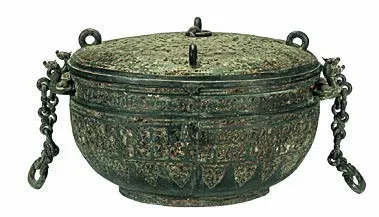
·提梁圆鉴
器盖和腹内壁都有铭文“曾侯乙作持用终”。鉴是盛水的器皿,在楚系墓葬中,鉴的使用限制在极少数高等级贵族阶层中,且并非所有封君级别的贵族都能使用青铜鉴。
Round, Loop-handled Jian (ancient vessel). Both its cover and inner wall bear the inscriptions "Manufactured and enjoyed by Marquis Yi of Zeng for ever". Jian was a vessel for holding water. In the tombs of Chu States, the use of Jian was limited to a very small number of high-ranking aristocrats, and not all nobles of the monarch rank were allowed to use bronze Jian.
[楚王媵随仲芈加鼎]

·楚王媵随仲芈加鼎
盖、器内底铸有相同铭文:“唯王正月初吉丁亥,楚王媵随仲嬭(芈)加飤繁。其眉寿无期,子孙永宝用之。”这是楚王为其女所作的媵器,女儿称为“随仲芈加”,“随”是夫家氏名,“仲”是排行,“芈”是父家族姓,“加”是女子私名。这件楚王鼎是楚王与曾(随)国联姻时的陪嫁品,见证了曾楚在春秋时期的关系。
Ding of King of Chu as Dowry fo His Daughter Suizhongmijia. The cover and the inner bottom of the vessel are cast with the same inscriptions:"At the beginning of the first month of the king's reign,King of Chu manufactured the Ding as dowry for his daughter Suizhongmijia. Wish her enjoy a long and healthy life and her descendants will use it forever."This is a ware named Ying(dowry) from King of Chu for his daughter, and his daughter was named "Suizhongmijia","Sui" was the clan name of her husband, "zhong"(the second)was her sequence in her siblings, "mi" was the family name of her father, "jia" was the private name of the woman. This Ding, from the King of Chu, was a dowry when the King of Chu married his daughter to Zeng (or Sui) State, which witnessed the relationship between Zeng State and Chu State during the Spring and Autumn Period.
[楚屈子赤角簠]

·楚屈子赤角簠
盖、器内壁铸有相同铭文:“唯正月初吉丁亥,楚屈子赤角媵仲嬭(芈)璜飤簠,其眉寿无疆,子子孙孙永保用之。”屈、景、昭为楚三大姓,本件为存世仅见屈氏之礼器,是楚国贵族屈子赤角为其次女仲出嫁所作的媵器。
The Fu of Quzichijiao of Chu.The inner walls of the cover and the ware are cast with the same inscription: "At the beginning of the first month, Quzichijiao made his second daughter Mihuang a Fu (ancient cooking vessel)as dowry, and wished her have a long life and her children and grandchildren will use it for ever."Qu, Jing and Zhao were Chu's three main surnames. This is the only ritual ware of Qu family in the world, which was made as a dowry by Quzichijiao, a nobleman of Chu State, to marry his second daughter.
[镬鼎]

·镬鼎
镬鼎用于祭祀、宴飨等礼仪活动中烹煮牲肉,形体较大。此件是迄今所见楚国贵族墓出土最大的一件镬鼎,出土时鼎内残有牛骨。
Huo-ding (ancient cooking).The Huo-ding was used for cooking sacrificial meat in ritual activities such as sacrifice and banquet, and is relatively large in shape. This is the largest Huoding ever unearthed from the tombs of Chu aristocrats. When it was unearthed, there were bovine bones left inside the Huo-ding.
